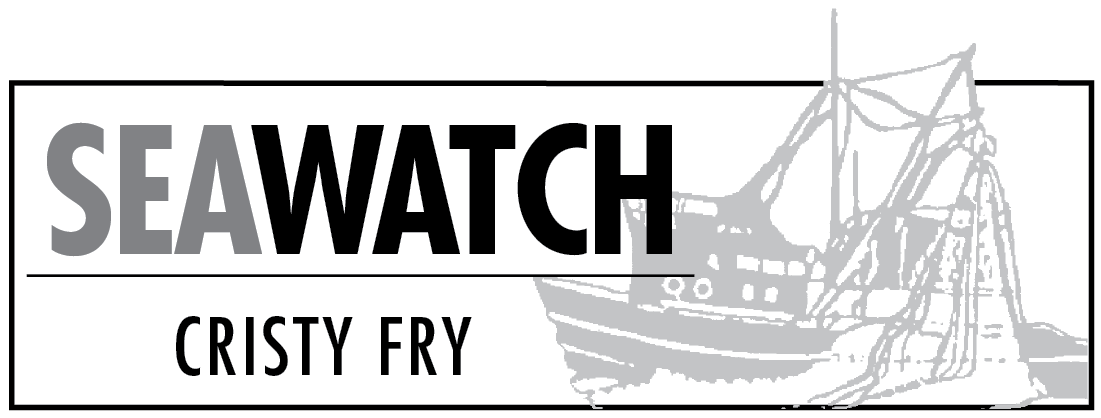Halibut fishermen can expect fairly flat, if slightly lower quotas in most areas if commissioners settle on the “blue line” catches at next month’s International Pacific Halibut Commission meeting, set out last week at the interim meeting in Seattle.
The blue line is the level of catch that represents even odds for maintaining current levels of spawning stock biomass, what used to be called staff recommendations.
The recommendation for Alaska waters is 20.41 million pounds, compared to a catch last season of 21.21 million pounds. However, some of that is allocated to the sport fishery in Southeast and Central Gulf of Alaska under the catch share plan.
The commercial allocation in 2015 was 17.14 million pounds; the sport fishery received about 18 percent of the 2C (Southeast) quota and about 23 percent of the 3A (Central GOA) quota.
Recommendations by area are:
• Area 2C, 4.63 million pounds, down slightly from last season’s 4.65 million pounds;
• Area 3A, 9.37 million pounds, down from 10.1 million pounds
• Area 3B, Western Gulf of Alaska, 2.76 million pounds, up from 2.65 million pounds;
• Area 4A, Eastern Aleutians, 1.3 million pounds, down from 1.39 million pounds;
• Area 4B, Western Aleutians, 910,000 pounds, down from 1.14 million pounds;
• Area 4CDE, Bering Sea, 1.44 million pounds, up from 1.28 million pounds.
It is the first time in more than a decade that there has been a natural increase in Area 4CDE. Last year the blue line for that area was 520,000 pounds, but the commissioners upped it after hearing testimony that fishermen could not even make expenses with such a small quota.
There was good news from the meeting, though, as staff explained that the weight per unit of effort, or pounds per hook, went up in most areas both during the surveys last year and data gleaned from fishermen’s logbooks.
In the setline survey, legal-sized halibut, or fish over 32 inches, had an increase in WPUE of 12 percent.
Area 3A did not fare so well; O32s went down 11 percent, but the fish under 32 inches gained weight. The total for all fish was only down 4 percent.
Area 3B had a total increase of 11 percent, but the O32s went up 21 percent.
Area 4A went down a total of 8 percent, with the O32s down 10 percent.
Area 4B went up a total of 9 percent with O32s up 13 percent.
Area 4CDE showed the most promise, with a total gain of 16 percent, with O32s up 26 percent.
Ian Stewart, quantitative scientist with the IPHC, called it “encouraging.”
The commercial logbooks showed increases in WPUE in nearly all areas, some more than others.
Since the logbooks only record O32s, there is only one number per area.
Area 2C went up 18 percent, 3A up 11 percent, 3B up 47 percent, 4A up 9 percent, and 4B up 7 percent.
The Bering Sea was broken down by area; Area 4C went up 63 percent, and 4D went down 20 percent. There was no data for Area E.
Other good news included a drop of more than one million pounds of halibut bycatch from the trawl fishery from the previous year.
The bycatch for 2014 came in at around 8.8 million pounds, and is expected to be around 7.7 million pounds this season.
About half of that comes from the Bering Sea, waters around the Pribilof Islands, and nearly all of the decrease in bycatch came from those waters.
Bycatch has dropped around 15 percent statewide in the last 5 years.
“I think this is good news … especially for the directed fishery,” said Stewart. “We saw some very large reductions, and I think the voluntary efforts that we heard a lot about at our annual meeting last year, particularly with regard to Area 4CDE, seem to have produced a substantial reduction in bycatch in 2015.”
Part of the bycatch reduction came from deck sorting halibut on trawlers, according to a story in Seafood News.
Halibut deck sorting is done with a special permit from NMFS called an Exempted Fishing Permit, or EFP.
The permit allowed fishermen to remove halibut from the cod-end on deck as the catch is dumped into the fish tank rather than sending them into the tank along with everything else.
Fish sorted on deck are rapidly moved on a chute to on-board scientists who document the length and condition of the fish before returning them to the sea.
Preliminary data from scientists monitoring the program show that deck sorting reduced the mortality rate of the halibut in the EFP to an average of 48 percent. The rate for halibut without deck sorting averages approximately 80 percent.
The 48 percent mortality rate included the halibut that were missed during deck sorting (about 5% by number) and recovered in the factory. For those missed fish, a mortality rate of 90 percent was applied in the EFP.
Seafood news also reports that five regulation changes are proposed for consideration at the January annual meeting.
The Fishing Vessel Owners’ Association is requesting the halibut size limit be reduced from 32 inches to 30 inches. Based on reports from the 2013 fishery observer program in the Gulf of Alaska, the association said “the directed halibut fleet is releasing 8.7 million pounds of undersized halibut (less than 32 inches). New reports suggest that with a 2-inch reduction, the fleet could reduce handling by 58 percent, and reduce wastage from 1.35 million pounds to 0.58 million pounds.”
Another proposal by Kodiak fisherman K.C. Dochtermann recommends a maximum size limit of 60 inches for all halibut caught by commercial and sport users. That’s about 110 pounds, according to one length-weight chart.
All documents and full audio from both days of meetings can be found on the IPHC website at http://www.iphc.int/home.html.
Cristy Fry can be reached at realist468@gmail.com.


